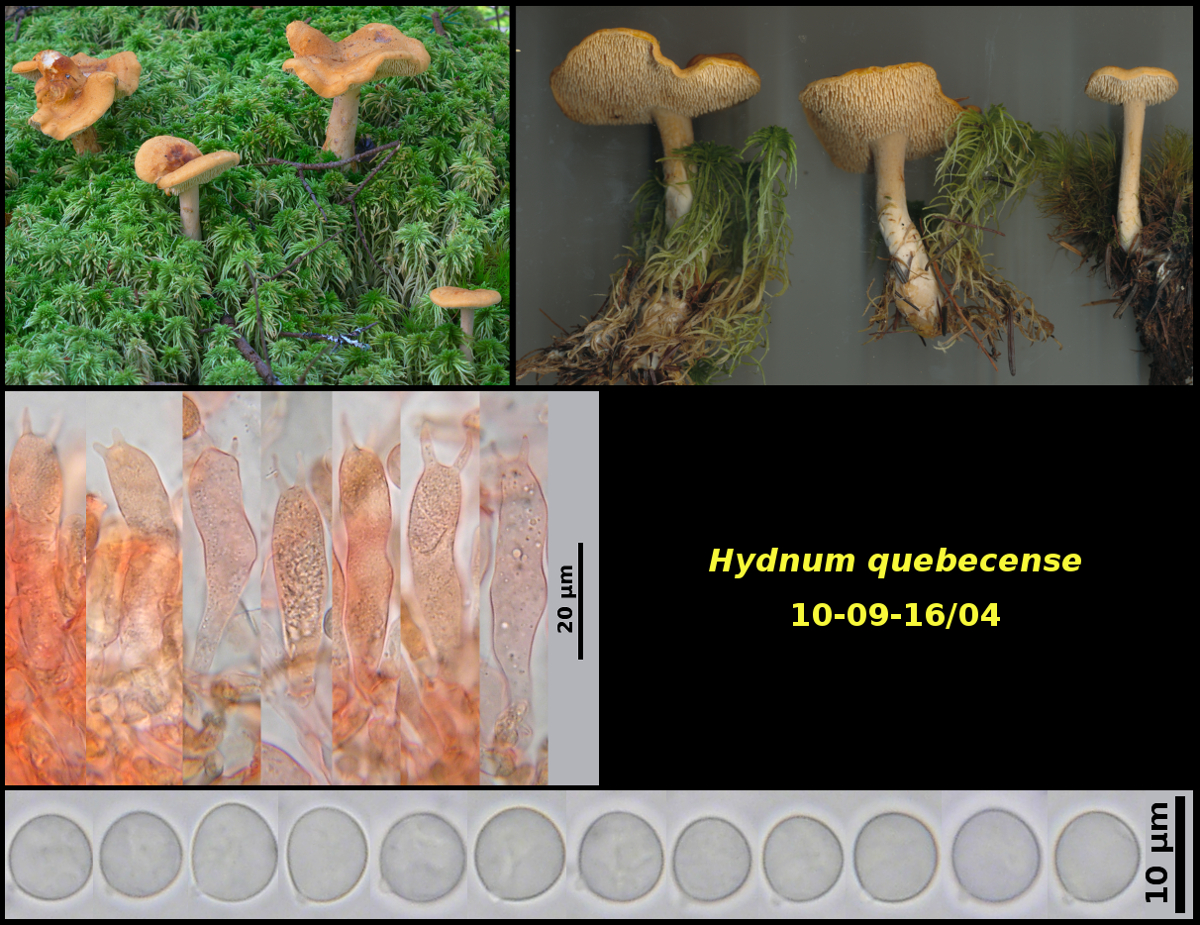Fleshy Fungi of New Brunswick >>
Hydnum quebecense
Hydnum quebecense Niskanen & Liimat.

Scattered (many) in Sphagnum and Dicranum carpets, associated with Abies balsamea and Betula cordifolia, Little Lepreau, New Brunswick (10-09-16/04).
Basidiospores hyaline, subglobose to broadly ellipsoidal, smooth, without iodine reactions, 6.6-8.5 X 6.5-7.8 μm, D/d = 1.01-1.19 (average[26]: 7.7 X 7.1 μm, D/d = 1.07). Basidia consistently 2-spored. Cystidia lacking
Hydnum quebecense is one of several species that have been lumped together under the name H. repandum, a species now known to occur only in Europe. Niskanen et al. (Mycologia 110: 890-918. 2018), using molecular tools, reported 49 species of Hydnum worldwide and estimated that nearly as many are yet to be discovered and named. Swenie et al. MycoKey 42: 35-72. 2018), working with eastern North Americal collections, described six additional new species and included a key for all the known species in this region. However, we still have a long way to go!
Identifying H. quebecense is probably not difficult. It is recognized by its more or less depressed to umbilicate orange pileus, rather long stipe and nearly spherical basidiospores. It appears to be associated with carpets of Sphagnum moss. It is very similar to H. umbilicatum, which differs in having larger basidiospores and in growing in soil without Sphagnum. Swenie et al. briefly called attention to an undescribed species, labeled by them as "AS30", collected in New York State. This species also occurs with Sphagnum and has smaller spores than those H. quebecense, coming closer to the measurements we have for Collection 10-09-16/04. However AS30 has 3- to 4-spored basidia, while those of our material are consistently 2-spored.
Photograph: D. Malloch. (10-09-16/04).